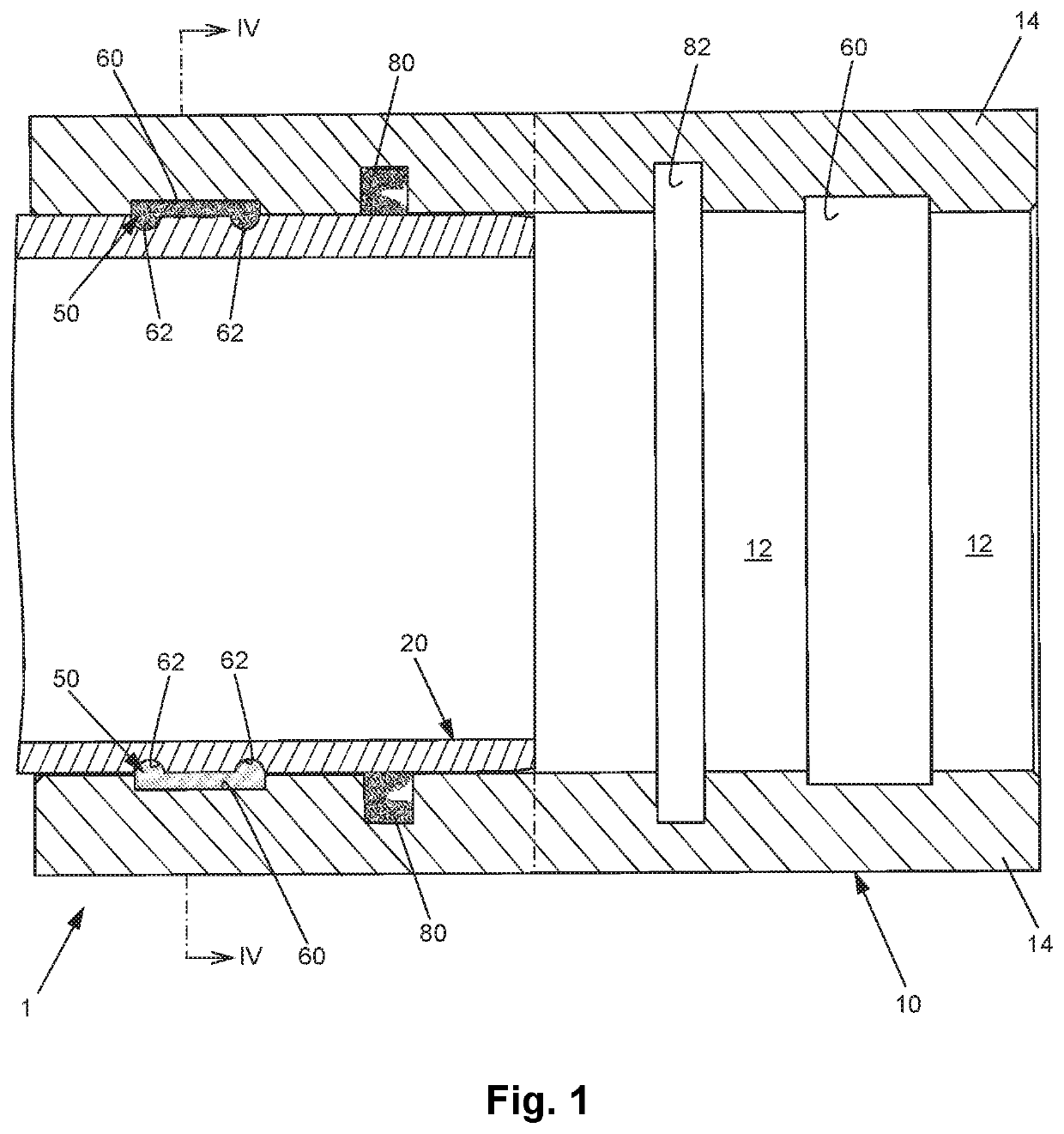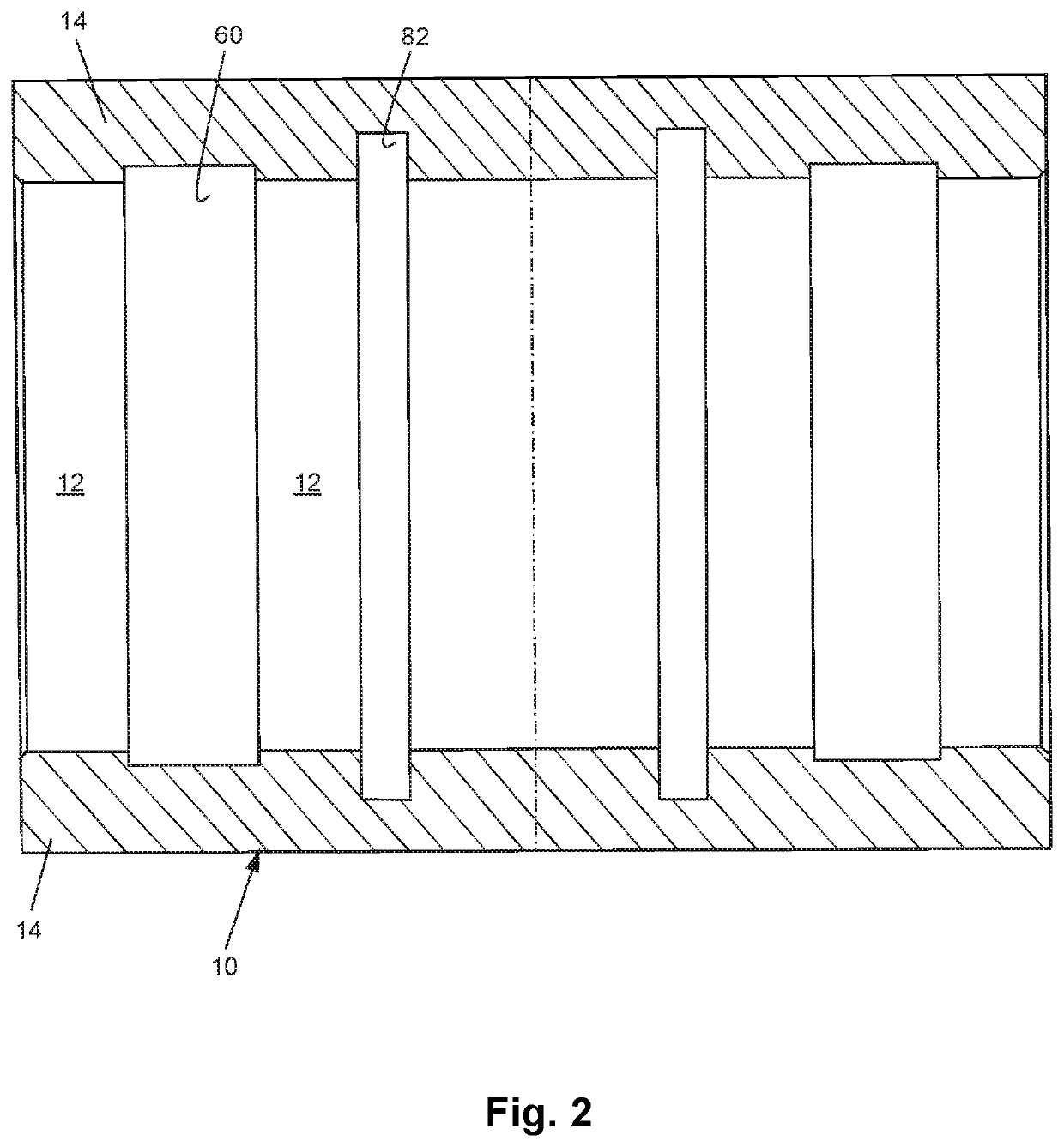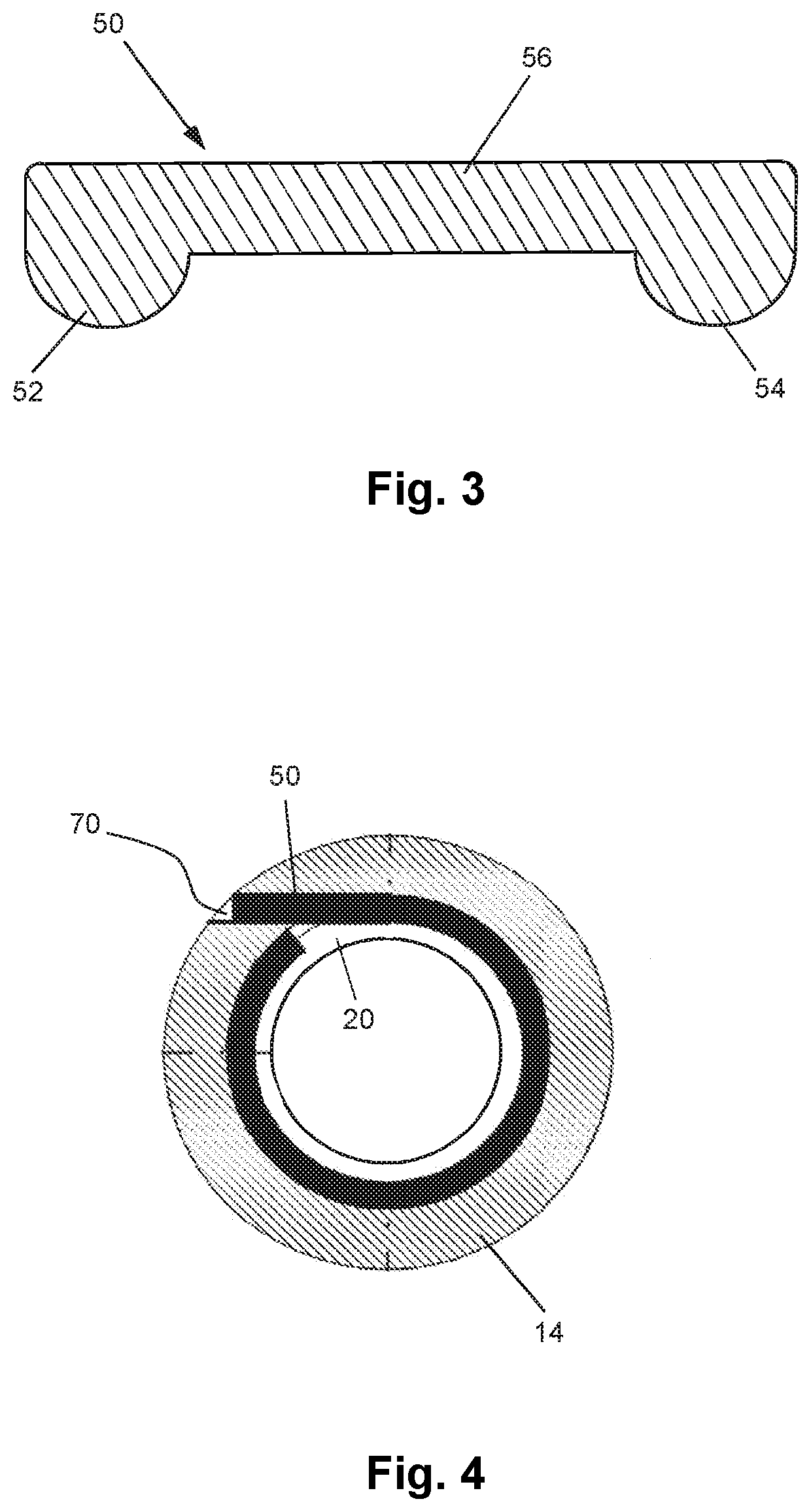However, welded joints have a
disadvantage of requiring skilled workers to form them, as well as having negative health and safety and environmental implications.
Also, around 1 in 10 of such welded joints typically may need some repair after such inspection.
A further problem with both press-fit and welded joints is that they are difficult to disconnect, for example for repair or maintenance, and once disconnected they are generally not re-useable.
Furthermore, disconnection of press-fit or welded joints often results in damage to the pipe lengths themselves.
However, in practice such joints have limited
efficacy and
longevity, in particular when the jointed pipe lengths are subjected, as is common in many
fluid transport systems, to high internal fluid pressures and / or repeated pressure pulsing of the pumped fluid.
In such cases a new problem which occurs over time is that wear occurs of the material defining and surrounding the grooves in the respective pipe walls, which leads to reductions in the wall thicknesses at the groove sites, which ultimately can lead to failure of the pipe walls themselves in the vicinity of the joint.
This problem is exacerbated by the increasingly attractive move away from steel pipes and towards using pipes made of plastics materials, which often may not be as hard, tough or hard-wearing as steel, especially when used in conjunction with
metal jointing wires.
A further problem is that repetitive strain of the flexible elongate jointing wire itself used to form the joint leads to weaknesses in the wire itself, which can thus lead to failure of the sole means which axially secures the pipe lengths together, which again can lead to failure of the overall joint.
It is not a practical solution to the above problems simply to employ thicker pipe walls and / or thicker jointing wires, because this would be very uneconomical, not only from the point of view of requiring greater amounts of materials with increased weight, bulk and cost, but it would also reduce the internal volume of, and thus fluid-
carrying capacity of, the pipe.
And in any event this would by no means be a complete, efficient or long-term solution to the underlying problem of
joint component wear, since such would still occur under commonly encountered high pressures and pulsed pressure loadings of the joint under typical working conditions.
Furthermore, it is also not a practical solution to the above problems to simply employ a “double-joint” (or even a “triple-” or “quadruple-” etc joint), in which two or more like wire-in-grooves type joints, axially spaced apart a
short distance, each based on a respective resiliently flexible elongate wire inserted into a respective pair of mutually opposed grooves in the pipe walls to be jointed, are employed in an attempt to axially spread and thus reduce the
axial loadings that occur on each joint.
This is because the typical practical
engineering tolerances in the accuracy of the axial positioning of such plural sets of grooves in the respective pipe walls (especially over their entire circumference and as between different pipe sections) that such an arrangement would demand in order to work properly would be generally too great.
This would therefore defeat the underlying object of spreading load between the plural joints, and would still be a particular problem in the case of repetitive pulsed loadings.
Attempting to reduce
engineering tolerances in order to address this issue is not a practical option, since that would place too great a demand on typical pipe manufacturing techniques and machinery, and would if anything, even if achievable to an acceptable degree in principle (which is technically unlikely), lead to unacceptably increased levels of cost.
 Login to View More
Login to View More  Login to View More
Login to View More 


